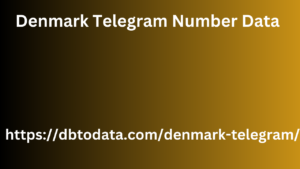Post by account_disabled on Mar 8, 2024 22:27:08 GMT -5
It is clear that, in order to produce a concrete effect on your audience, storytelling must respect some communicative functions, as they are understood in Roman Jakobson's classic model: the conative one, linked to persuasion and the call to action; the poetic one, to draw attention to the form of the story; that effort, connected to maintaining contact between narrator and interlocutor in relation to the chosen channel. It is equally fundamental that you also highlight the roles within the story you have decided to tell: whoever follows It is clear that, in order to produce a concrete effect on your audience, storytelling must respect some communicative functions, as they are understood in Roman Jakobson's classic model: the conative one, linked to persuasion and the call to action; the poetic one, to draw attention to the form of the story; that effort, connected to maintaining contact between narrator and interlocutor in relation to the chosen channel.
It is equally fundamental that you also highlight the roles within the story Denmark Telegram Number Data you have decided to tell: whoever follows you must understand, through the narrative, who the hero is and what qualities characterize him, who the enemy or the antagonist who opposes his mission, who will benefit from resolving the conflict, and who (or what) can help the protagonist. A well-developed storytelling should therefore always respect this scheme: the public discovers that there is a hero (i.e. your brand) who has a mission to accomplish to bring a concrete benefit (to your customers); to do so he will have to face an antagonist (e.g. unfavorable market conditions or the lack of use of a product) but he will also be able to count on a helper (the product or service to be marketed). You can find excellent examples of brands that have created exciting and impactful stories: look at this list (although a little dated) developed by Mediabuzz.

You must understand, through the narrative, who the hero is and what qualities characterize him, who the enemy or the antagonist who opposes his mission, who will benefit from resolving the conflict, and who (or what) can help the protagonist. A well-developed storytelling should therefore always respect this scheme: the public discovers that there is a hero (i.e. your brand) who has a mission to accomplish to bring a concrete benefit (to your customers); to do so he will have to face an antagonist (e.g. unfavorable market conditions or the lack of use of a product) but he will also be able to count on a helper (the product or service to be marketed). You can find excellent examples of brands that have created exciting and impactful stories: look at this list (although a little dated) developed by Mediabuzz.
It is equally fundamental that you also highlight the roles within the story Denmark Telegram Number Data you have decided to tell: whoever follows you must understand, through the narrative, who the hero is and what qualities characterize him, who the enemy or the antagonist who opposes his mission, who will benefit from resolving the conflict, and who (or what) can help the protagonist. A well-developed storytelling should therefore always respect this scheme: the public discovers that there is a hero (i.e. your brand) who has a mission to accomplish to bring a concrete benefit (to your customers); to do so he will have to face an antagonist (e.g. unfavorable market conditions or the lack of use of a product) but he will also be able to count on a helper (the product or service to be marketed). You can find excellent examples of brands that have created exciting and impactful stories: look at this list (although a little dated) developed by Mediabuzz.

You must understand, through the narrative, who the hero is and what qualities characterize him, who the enemy or the antagonist who opposes his mission, who will benefit from resolving the conflict, and who (or what) can help the protagonist. A well-developed storytelling should therefore always respect this scheme: the public discovers that there is a hero (i.e. your brand) who has a mission to accomplish to bring a concrete benefit (to your customers); to do so he will have to face an antagonist (e.g. unfavorable market conditions or the lack of use of a product) but he will also be able to count on a helper (the product or service to be marketed). You can find excellent examples of brands that have created exciting and impactful stories: look at this list (although a little dated) developed by Mediabuzz.

